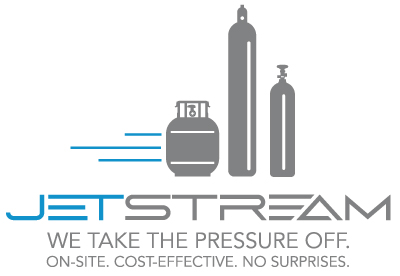When your company deals with compressed gas cylinders on a regular basis you have to send them away to be refilled regularly. Since even these empty cylinders can be dangerous it’s important to understand how to handle them safely. Here are some general guidelines to follow when transporting empty cylinders for disposal or to be filled by the supplier. Stick with these guidelines and maintaining gas cylinder safety will be possible.
Empty Cylinders Aren’t Really Empty
It’s important to realize that even an empty compressed gas cylinder is not really empty, unless it is cracked open. A cylinder is considered empty when the gas in the tank drops down to the atmospheric pressure outside of the tank. The Gas won’t come out the valve any longer, but it will still leak out of the tank if it is cracked or punctured.
Transporting the Cylinder to the Vehicle
If you have to move your cylinder a decent distance to get it to the transportation vehicle it’s important to do it safely. Shut off the valve and place a cap over it. Always move a cylinder using an upright cylinder cart. Be sure to secure the cylinder using a chain around the midpoint of the cylinder. Use a cradle to lift the cylinder up into the vehicle while keeping it upright the entire time.
Transporting Cylinders by Vehicle
Although it is preferred that compressed gas cylinders are transported in supplier trucks, they can be moved using a standard truck as well as long as all the necessary gas cylinder safety precautions are taken.
 Placing the Cylinder in the Vehicle
Placing the Cylinder in the Vehicle
Before the tank is even loaded onto the truck it has to be inspected for any possible damage. Look closely for any dents, cracks, or bulges in the tank. Also look out for any sections that have been repaired by a weld, because these tanks should not be used.
Ensure that the cylinder has all of the necessary labels and marks to meet requirements made by the Department of Transportation. The cylinder has to be locked firmly in the upright position. When a standard truck is used a harness, chain, or clamp should be installed in the vehicle to properly hold the cylinder in place. The valve stem has to be covered by a valve cap at all times to protect it against any damage.
It’s very important that the gas cylinder is kept in the back of the truck during transportation to provide proper ventilation in case of a leak. When gas cylinders are transported both sunlight and heat can cause gas to leak out of the canister, and that can be dangerous in an enclosed environment making gas cylinder safety nearly impossible.
Making the Trip
During the trip smoking should be strictly prohibited in case of fumes, and the vehicle should be kept out of heavy traffic whenever possible. Always operate the vehicle responsibly and avoid any dangerous situations. Drive straight to where the cylinder has to go and remove it from the truck immediately. Getting the trip over as fast as possible will minimize the risks involved with moving the cylinders around.
Keep these guidelines in mind whenever you transport empty cylinders and you shouldn’t have any problems. Don’t treat the cylinders as safe just because they are empty. There are still plenty of risks involved with them that should always be considered.
Contact us for a FREE consultation and estimate on compressed gas cylinder cleanup and disposal that will reduce your risk and improve your bottom line.

